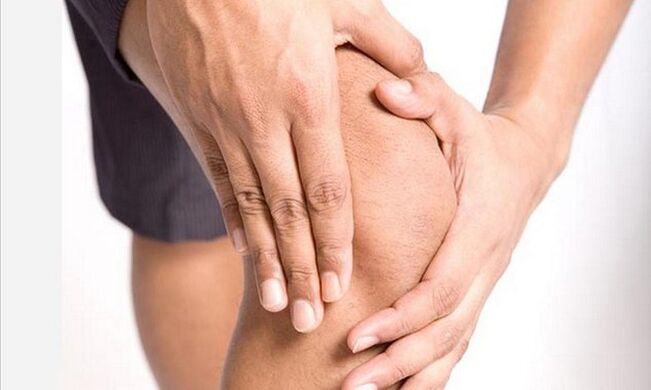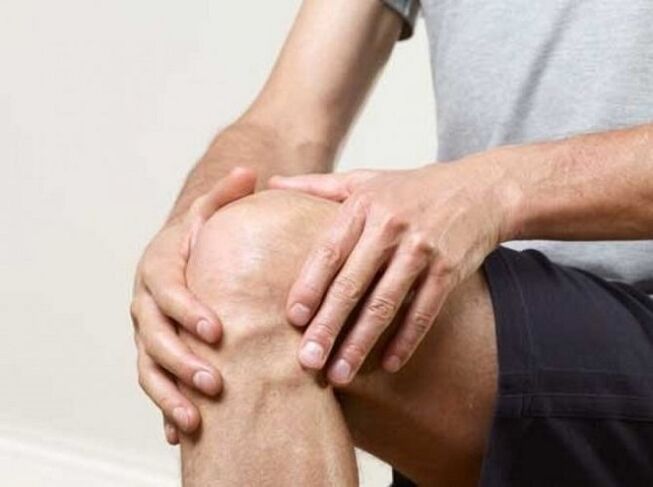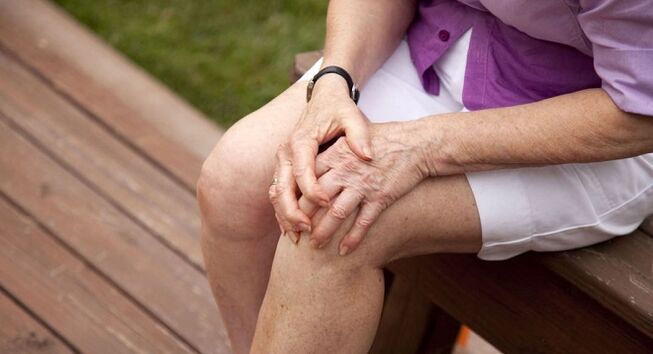
All joints in the human body have two enemies that prevent them from working fully. These are osteoarthritis and arthritis. Despite the fact that they are similar in name, they are two different pathological processes that affect the cartilage tissue of the joints. Below we will examine how osteoarthritis is different from arthritis.
As you know, cartilage is what makes joints work. Cartilage is strong and sturdy because it lacks blood vessels and nerve endings. Thanks to this, the stress on the tissue, in which there are capillaries or nerve fibers, is reduced.
When a person is in motion, the cartilage tissue promotes painless, unimpeded rotation of the bone heads in the joint cavity, preventing friction damage to the joint. During jumping and walking, the cartilage softens the load and fulfills the function of shock absorption.
Osteoarthritis and arthritis lead to joint stiffness, which prevents a person from leading a normal life due to restricted movement. There are a number of symptoms where the two diseases are similar, but there are many other symptoms that are fundamentally different.
Physiological processes caused by arthritis
The first symptom of the disease is joint pain. With arthritis, the inflammatory process of the cartilage tissue begins.
In the joint, arthritis affects:
- Joint capsule;
- Synovial fluid, which lubricates and nourishes the tissues and joint cavity;
- located along the edges of the synovial membrane.
Patients diagnosed with arthritis most often complain of pain and joint stiffness. The inflamed area will begin to turn red and the temperature will rise even at the site of arthritis or polyarthritis. In some cases, the pain syndrome can also be felt in the paired joint on the other arm or leg.

One symptom that worries the patient in arthritis and polyarthritis is swelling of the external joint tissue.
Despite the fact that the functions are reduced, there is no deformation of the structure. Arthritis causes the appearance of an inflammatory process of the cartilage tissue caused by trauma, infection, or metabolic disorders. This disease is completely curable, but only on the condition that during treatment the patient follows the recommendations of the doctor and does not use unverified folk remedies for arthritis. If this process is allowed to take its course, the disease leads to joint deterioration.
Physiological processes caused by osteoarthritis
The presence of osteoarthritis or spondyloarthrosis leads to pathological processes that occur in the joint cavity. Since there are no vessels in the cartilage tissue, it feeds on the synovial fluid, which contains many elements.
When a person reaches old age, the metabolic processes in their body slow down, as a result of which the nutrition of the cartilage deteriorates, which leads to its deterioration.
Cartilage with different types of osteoarthritis becomes thinner and can no longer cope with its shock-absorbing functions. Because of this, the moment the joint is affected, patients begin to experience pain syndrome.
In this case, there is no point in taking anti-inflammatory drugs for osteoarthritis, as there is no inflammatory process. This disease occurs in the elderly. Its appearance is influenced by a person's lifestyle. For those people who eat right, lead a healthy lifestyle, osteoarthritis does not usually occur.
Another factor in how arthritis differs from osteoarthritis is that, unlike the first, the second disease has no edema and no reddening of the tissues.

Osteoarthritis also differs in that it affects a specific joint. If it affects a joint on one arm, it is not the other. It often occurs in large joints like the hip or knee.
Different and similar characteristics of diseases
Similar symptoms:
- in the morning a person feels numbness and stiffness in the joint;
- Loss of full limb movement;
- Pain when moving the affected joint.
These are symptoms inherent in two diseases, but the pain has a different character, the place of appearance and the duration of the sensations are different. As a rule, the doctor relies on these indications for diagnosis.
Differences Between Osteoarthritis and Arthritis
- With arthritis on the site of the affected joint, an increase in the temperature of the skin is observed, this process is caused by inflammation. With osteoarthritis, however, this symptom is absent, although the degenerative process is ongoing.
- Arthritis leads to swelling of the upper tissue, the second disease lacks this symptom.
- The presence of polyarthritis, arthritis due to inflammation, can lead to subcutaneous nodules. Such symptoms are not inherent in osteoarthritis.
- Osteoarthritis causes a deformation process in the joint and if left untreated, it will go untreated (using ointments for osteoarthritis or other methods). The presence of polyarthritis or arthritis does not lead to deformities.
- Because of the inflammation in arthritis, the skin in the affected area is redder. The second disease does not change the color of the skin.
Similar signs and their differences
There are a number of nuances that can be diagnosed during the examination. Symptoms with individual and similar symptoms are described below.
Painful sensations
As mentioned above, pain syndrome occurs in both diseases. However, arthritis must be characterized by the presence of inflammation that leads to pain. The nature of the pain is acute and can occur even at night or immediately after waking up.
Many people themselves worsen the situation when they use a new miracle cream or a product advertised on the Internet for the treatment of polyarthritis. Any good doctor will tell you that you cannot independently prescribe treatment for arthritis.
In osteoarthritis pain occurs due to the breakdown of the cartilage tissue, which cannot reduce the load. If there is no amortization, the bone apparatus is injured.
A person experiences aching pain after long walks or doing exercises that place stress on the joint. When the disease first appeared, the patient may feel slightly uncomfortable, but as the disease progressed, the condition only worsens. In this case, not only do you need to take pills or other drugs for osteoarthritis, treatment should be complex and carried out under the supervision of a doctor.
Deformation process
Both diseases can change the structure of the joint. Arthritis can be detected by external physiological changes that can be seen on visual examination: an increase in local temperature, redness, swelling and the formation of lumps.
Arthritis is often associated with: weakness, increased sweating, psoriasis. Only certain types of arthritis can change the structure of the joints - these are osteoarthritis and traumatic arthritis.
Osteoarthritis is considered a more insidious disease because it does not manifest itself externally. However, active tissue deformation occurs in the joint cavity. The cartilage becomes thinner and the bone tissue is exposed to unusual loads.
inflammation
With arthritis, swelling occurs in the area of the affected joint. The reason for this is the inflamed synovial film, which is located in the middle of the capsule. When examining the patient's analyzes, an increased level of leukocytes is detected. Usually, the presence of an infection or injury leads to the appearance of an inflammatory process.
Osteoarthritis does not lead to an increase in leukocytes because there is no inflammation. The process of degeneration begins gradually, and often a person doesn't even notice any symptoms.
Clicks and crunches
One symptom of osteoarthritis is a crunch in a sore joint. The reason for this is the worn cartilage tissue, which causes pain when bone tissue interacts. However, crunching does not always indicate the presence of a disease, a healthy person can also hear clicks. With osteoarthritis, the sound is rough and dry.
There is no crunch in arthritis because the joint swells and cannot move fully as a result of inflammation, and the cartilage tissue performs its functions.

Joint mobility
Both diseases have a common symptomatology, also in that they restrict the mobility of the joints. However, the reasons for the stiffness are different.
A decrease in the motor activity of the joint with osteoarthritis is caused by the thinning of cartilage tissue, while at the onset of the disease there is no such symptom at all. In arthritis, the stiffness is caused by inflammation and is great. The joint is completely paralyzed.
General and specific causes of occurrence
Common causes of illness are injuries sustained while running or jumping. Regular and heavy loads on the connection can also lead to this. It is for this reason that diseases are most common among professional athletes. Another reason is severe or frequent hypothermia, which is common in the joints of the limbs.
Arthritis occurs as a result of inflammation caused by the appearance of an infection in the body. This is not typical of osteoarthritis. Since inflammation is a whole body process, arthritis is only a consequence. To cure the disease, it is necessary to find out the cause of the onset of the inflammatory process and eliminate it. Obesity can also lead to the onset of arthritis as it puts stress on the joints. In this case, the joints of the lower extremities and the musculoskeletal system are at risk.
Osteoarthritis is a disease in its own right, as this process has nothing to do with the general condition of the body. The reasons for its occurrence are hidden in a small amount of substances that enter the body due to improper nutrition. Bad habits like smoking and alcohol abuse can also provoke the disease. Often its appearance is promoted by diseases of the circulatory system and hormonal disorders. According to statistics, it is mainly the elderly who suffer from osteoarthritis.

Who is at risk
A person of any age is prone to arthritis. The disease caused by infection even affects babies. According to statistics, women are more likely to suffer from arthritis.
Older people suffer from osteoarthritis. As a rule, the deformation of the structure of the cartilage tissue begins in those over 60 years of age. The fact is that the older a person is, the slower the metabolic processes in the body, this is also influenced by the person's lifestyle. By the way, those with arthritis are more prone to osteoarthritis.
The risk group includes people who have bad habits, subject their bodies to regular physical activity, and eat poorly.
Often used in the treatment of arthritis and osteoarthritis
In some cases, the same measures are taken for the treatment of these diseases:
- The patient must eliminate all stress and establish a frugal regime.
- Take drugs that restore cartilage volume and nourish it.
- Performing exercise therapy in connection with a massage to improve the metabolic processes in the body and the blood circulation in the diseased joint;
- the use of pain relievers for pain relief;
- The doctor prescribes intra-articular blockade in the form of injections.
- Oxygenation of the joint;
- The patient switches to a complex diet.
Treatment varies particularly over the course of antibiotics for infectious arthritis to treat the underlying cause of the disease.
When the stage is advanced, they resort to surgical intervention for treatment. This need arises when the cartilage tissue is completely destroyed. In this case, a prosthesis is installed.

























